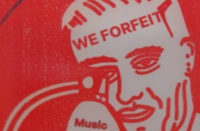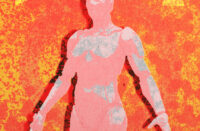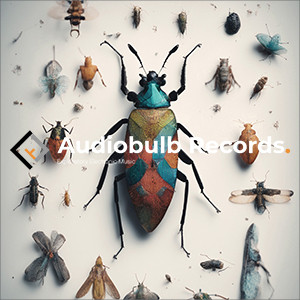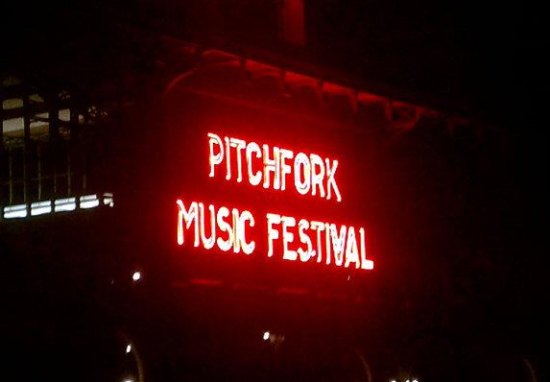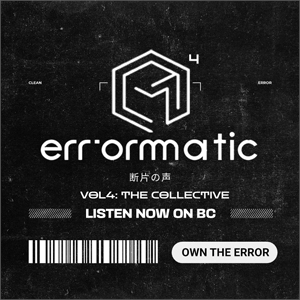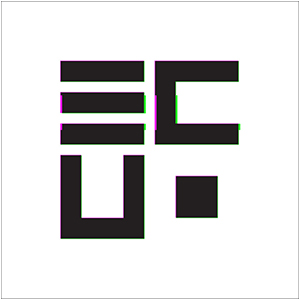::..:::…..:..::….:::::..:::..:::::::……:::…::.:::….::::..:..:::…::…….::::
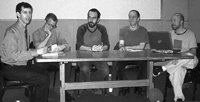
MUSIC FESTIVALS ARE SPROUTING UP IN THE ODDEST NOOKS OF THE EARTH and in places where you would imagine they could have been happening for years. Some are truly developing into international festivals with reputations and record number crowds (All Tomorrow’s Parties, Mutek, Sonar) and others are still keeping to cutting edge premises that define a completely new way of shaping such experiences such as Transmediale, Electrohype, Avanto and Sensoralia just to name a few.
Bridging the gap is the first-ever Intransitive Music Festival in Boston launching with quite a bit of promise with artists mainly stemming from New England and New York. Offering a single panel discussion titled “Sound and Geography: Community and Place in Experimental Music” the festival was surely more focused on the music than the more behind-the-scenes, in depth educational aspects of the futuristic field of electronic sound. Established back in 2000 (?) sound artist Howard Stelzer heads the influential indie label that produces works that are electronic, experimental and otherwise not quite ready for prime time. Having released works by Lionel Marchetti, Kapotte Muziek, Roel Meelkop, John Hudak and Jason Lescaleet among many others, Intransitive is about to embark on their latest compilation Intransitive Twenty-Three (available in mid June). The festival was, in part, his ultimate thesis towards the recent completion of his Master of Fine Arts in the Studio for Interrelated Media Department of Massachusetts College of Art. With lauded established and emerging artists, Stelzer curated an eclectic mélange of visionary talent in the sensory realm. After attending most of the shows, eating Ethiopian cuisine with some of the festival artists and finding the experience to be somewhat of a weekend sound village, I share some of my most immediate responses with you.
::..:::…..:..::….:::::..:::..:::::::……:::…::.:::….::::..:..:::…::…….::::
Seth Nehil (artist); Vic Rawlings (artist); Mike Bulloch (artist); Dan Hirsch (Curator, Non-Event); TJ Norris (artist, writer, curator). Moderator: Howard Stelzer
Somewhere in the annals of MassArt’s Film Society we gathered for this panel about one-half hour late to an audience of fewer than ten folks. The discussion covered mostly topics related to the “Boston scene.” Panelists discussed the high and low points of Boston’s Autumn Uprising festival, the Zeitgeist Gallery and the tight-knit community that once was, and seems to be unraveling at its seams. Outside of that an important topic seemed to be the overall importance to and influence of the curator in the development of a music scene, and/or series. How bias can bring focus to certain important community-based and regional trends in music and art.
I wrote some opening comments that I only passed to the moderator but never spoke aloud, so I saved them to share here:
Community is elusive; poor/starving artists are gypsies connecting the dots to our six degrees of separation. Music festivals are community villages, temporary turf, places where we meet, gather, share creative and irrational ideas, many of us have only met via the thin wires of the internet, and when we come face to face there is sometimes a sense that you have been friends forever, and other times when mirroring the moment that draws us near, in the 4th dimension, the banality of it all jars our basic reasoning, our mutual respect, and interrelated and/or collaborative purposes. How long did it take you to get here today? Did you walk, take public transit, fly in from another major city, small town, another country perhaps? Communities are improvisational and instigated, intuitive and designed, primal and fabricated. Musicians, composers, emerging, established and aspiring artists, audience, writers, curators, designers, indie label owners, students, teachers –we are gathered here today for one collective purpose – to seek out the lines of communication, the magnetic field, the process of human osmosis perhaps that draw us together in our love and interest in how sound has effectively changed our daily lives, and the hunger for becoming, reshaping and otherwise distilling our fascination with the polarity between silence and chaos.
::..:::…..:..::….:::::..:::..:::::::……:::…::.:::….::::..:..:::…::…….::::

Stelzer opened the proceedings by introducing the festival. His tailored suit and recent MFA intact, the fifty of so in the attentive audience assembled under the roof of Mass College of Art’s Tower Auditorium:
Seth Nehil: First up was Nehil’s “For 12 Players Even Spaced Around the Perimeter (the arising of form always involves some predisposition on the part of our structure).” Multiple players surrounding the space (Nehil, Mike Bulloch, Georgina Lewis, Keith Fullerton Whitman, Dan Hirsch, Bethany Wright, others) were mostly assembled by Stelzer in advance. The high-pitched continuum, sparks and cut syllables vocalized by the players in tandem were all kind of a blunt partial groan. Sparks (static) created by those lil’ things that pop when you throw them to the ground (called snappers, a firecracker-like toy). The delicate inclusion of harmonicas and other wind instruments, acted out like bees, permeating electricity in the air. The sounds channeling in and out of a variety of angles, left to right with vibrancies all rising just a touch out of tone, squealing almost. When the chord changes went into effect, all in a cycle of sorts, the sparks flew harder, and a calling – almost for help, (using the phrases in the subtitle in distorted syllables) I heard, “Please” –not from fear, but more of a neediness, a deadpan staid craving for recognition. The crackles seemingly grew closer in my ears; the players dropped wooden planks, wielded sticks and lumber of all sorts. The collision of man’s building tools, falling, jumbled, unfinished work all came to mind. The players them disassembled parts of the whole –crafting something from dislocated parts, from aspects that can never quite come together but all sort of tool unilaterally. It sounded like you could be in the center of a construction site that’s been hit by a vast ice storm, people wallowing through rubble, a scrimmage for building a foundation. With a common language that said work, construction, rebuilding, assembling, processing, these twelve carefully assessed what building blocks they had at hand. They spoke punctuated words in a connect-the-dots holler down an alleyway – like communicating laborers. In the end the workers tire, the piece gets languid, slacker, day long, fading into a slower, more toil-like state.
Mike Bulloch (Bass)/Vic Rawlings (Cello): The audience starts settling in and has grown to about 60 or so at this point, actually quite great for a festival in its first year. Bulloch and Rawlings enter the stage, starting by tuning and toying with their electronics, the atmosphere is dense, deep gray. Bulloch bows his bass, Rawlings, who builds his own electronic instruments, fiddles around with the knobs attached to his prepared cello reminding me somewhat of the way in which Bill Horist wields his stringed wares. Feedback fires, Bulloch’s playing is subdued as he caresses his strings in a defined, almost elegant, circular motion. Rawlings bows metal rods attached to the cello, with the big bass muting of a foghorn. Hiss, chatter, lost staccato vibrations, tones shifting and drifting. Wafting away Bulloch makes a gesture as if he is performing Reikei on this bass, maybe its equip with similar electronics as a Theremin? Finally a string sound seems awkward, almost out of place, but somehow shockingly organic. The wave of low-fi feedback bounces off the soundproof ceiling. Their playing is slow, methodical. These two look excited about the sounds they deliver, almost coy like, making me feel a lil’ goofy, but I like that. Some of the sounds are quintessential technical difficulties, space blips, toy pops and shrill numbness. They bow in unison, a tangential conversation between machines, while barely grazing their instruments. They dial chaos into their coordinates holding their wooden instruments in one arm, while playing with filters, knobs and wires with the other. The sound is almost intentional sounding even though they may be improvising. One thing is sure; they seem to have a clear rapport. Their performance is complete and I want more.
DONNA PARKER: Donna Parker got on stage to set up and was prepared, kindly asked if it would be OK to start then with a hint of anxious nerve pretty much went into her set straight on without an introduction. Unpretentious, with a bit of nerdy levity to her presentation, she made the audience feel immediately welcome as she stood solo on the stage with a small stand and a few electronics. She bent slightly, twisted the gizmo knobs and hurled waves of sonic sounds into the room that by now held an audience of almost 75. After she completed each of her first three short pieces she punched a pedal and quietly announced “and that’s one, that’s two…” and so on. It offered hints of duck hunting or prize fighting, completing rounds with pride. And the audience was as receptive. Her sound was glitchy, wiry and repetitively fun. Her fourth piece leaned more into breathing beats and had a almost break-out dance rhythm to it. But it was the hushed tonalities of her final work that brought the energy in the room to a halt, quiet, slightly raspy, but buoyant whirl of electronics that were downright lush.
WILLIAM BASINSKI: As a precursor to his live performance Basinski screened excerpts from his forthcoming Disintegration Loops I & II DVD on a large screen. Part one was a solemn, distillation of a rainy day from inside a home. The marks of rain masking and drawing around the landscape as the ambiance of his work played into the droplets and slight cascading of tree branches in the wind, helping them blossom into animation. Loop II was a cascade of New York pavement, the footsteps of businessmen and women walking, streaming to and from work, lunch, moving in space, but all focused on their footsteps. The DVD had some minor glitches and technical difficulties, that at first I thought might be part of the piece due to its title…but it soon became obvious, and after an apologetic acknowledgment from the dapper Basinski he started his live portion. His performance started rather slowly, quietly, almost an ode to silence. The crowd had swelled to almost 90 people and the room was still. His instruments were a mixer, a tape loop deck and a laptop. In a very librarian styled stance, almost research like, he played small, quiet loops of harmonic piano, a spirited drone and various found sound field recordings. The disembodied, absent piano, seemed forlorn in the mix, and as Basinki’s own physical gesturing was quite moderate, the piece had a sleepy feel. I noticed many people had closed their eyes for his performance. It had an inebriating effect. The washes of sound took a few climactic twists about 3/4s of the way through his half-hour performance and the organic loops along with enchanting melodies made for a somber final note to a strong first day of the festival.
::..:::…..:..::….:::::..:::..:::::::……:::…::.:::….::::..:..:::…::…….::::
John Hudak & Jason Lescaleet: The show was delayed for 1/2 hour for technical reasons. I ended up walking in a few minutes late to Hudak and Lescaleet meandering on stage, house lights up, but evidently in mid performance, Hudak walked on and off stage – finding an upright piano just behind the curtain. Lescaleet, in his socks, toyed around on his knees, behind a table with a large assortment of tape decks and other analogue to digital mixers and various and sundry equipment. Looking more like a repairman than a live performance, their presentation style had nothing in union with the music they made; the organization of sounds was inexplicably contained. The crowd was obviously too small, but not surprising for one of the first hot sunny days in Boston after a crispy cold winter. Many people who listen to this very internal noise were most likely hibernating indoors. The sound tinkered, and then added were some screeching modem-like sounds. The waves of forensic feedback traded for soft pulsation, sweetened by the coolness of a lullaby in reverb. Their tape loops swoop, chop, self-extract (sounds like an infomercial, huh?). A dominant piano key is struck, a tape loop is paused, a bell consistently provides an atonal course through the motions of the drifting mix.
The piano sounds live, but with its absence and only Lescaleet on stage again, the prerecorded music does its thing with or without Hudak physically seen though his offstage shadow playing could be live percussion as well? Hudak returns and winds a timer, amped upon a stage platform, whirring, spinning lil’ motorized purrs fill the room. I want to be in the dark. The reel of tape loop streams across an entire table length, winding, drooping. The audiences are community, mostly musicians playing in or associated with the festival, this is more of a laboratory this afternoon than a classic stage performance, but undeniably, the muse is on. These two, who had recorded an earlier work on the Intransitive imprint, have since updated their overall precise overlapping of complementary, subtle sound making. Popping percussion like old train rails whisking through a countryside are pretty, well, dreamy. I prick up my ears with my hands, like holding a shell against the side of my head, to a much denser din with trails of minor gurgles. Suddenly a tiny tinkering sound is heard. Lescaleet, who has been recording sounds generated by the speaker monitors on either MP3 or DAT removes the tiny recorder from atop the speaker and plugs the found reverb sound into the live mix. Hudak walks off stage again and it suddenly becomes something of an improv choreography of sorts. The movement keeps the visual experience from becoming numb. The stage seems lonely once Lescaleet takes his seat and bends over to his large equipment assortment. Stage presence aside, the mix is mystical nearing on mythical. Hudak winds his mechanical toys as both men are now in headphones, navigating. The atmosphere drifts into a low abrasive, snoring, fuel driven sound with the now much spread out bell chime now virtually gone. The remaining ocean like drone churns and burns out softly.
::..:::…..:..::….:::::..:::..:::::::……:::…::.:::….::::..:..:::…::…….::::
HOWARD STELZER: Starting off slowly the hiss creeps in as do croddy sounds of rusted metal clothesline spindles perhaps. Using cassette tapes, loops, a mixer and not much else, Howie’s bare setting seems as sparse as his auto-play-mode. Feedback shrieks, muffled crusty jumbles and croaks of various cassette decks, some tightly wound. In between pieces Stelzer fumbles a bit to put all the tapes in and out of their various output devices; The sounds of exhaust, the motor of a fan, the detritus of residual noise. The second piece was static generated and its voids were filled with lots of exterior excess. Dragging, ball bearing stillness, metal on soft, rounded metal caressing brushed steel. Ping…ping as racing toy car engines rev. Completing with three pieces, his work was pert, to the point and had a sense of humor about it. His dueling decks had a great inter-language, racing still-life, zoning in at times, a bit crooked at others. The ultimate goal was a mystery, who needs one really, well, I mean, it was about having a recoil of predominant energies that cascade and interweave, caress the edges but still find their way back to the center.
JOHN HUDAK: Returning to the stage for a solo set Hudak begins with a two string guitar, the image of his hand and guitar strings are presented live on a large rear screen. A close up a cascade of fumbling toy sounds – like walking through a mall and only catching glimpses of sounds radiating within each shop. The platelet shifting swirls of flapping, overlapping, molecular buzzing and clinking. His repeated rhythm is subtle and plays only (guitar) in the live realm and is pretty much non-amplified. In his second piece he plays a toy thumb piano made from a tomato can. But before it starts there is a big long silence. Hudak starts stroking the instrument with his thumb, which he seems to tune live as we can clearly see his actions on the big screen. Then all of a sudden the musicality of the tiny metallic handmade instrument comes to life, like a ready-made, an adult aural pleasure toy. Bouncing and rubbing with a childlike flair about it. His playing reminds me of the dissection of a music box.
United States of Belt: A stage filled with chairs set up like a large ensemble. Two guys on stage – in semi-formal attire. One man paces from chair to chair in the emptiness of a missing ensemble, casually looking at sheet music, meandering. One man “conducts” with the mixer that lays atop his podium. A funkier rhythm is introduced and laid on top of the amped drone. The narrative voice of the conductor, which seems prerecorded, speaks isms to the invisible choir. The gentleman in the chorus “faints” to the floor and the conductor talks him back into his chair. This is a typical post performance style, the talking all occurs with their back to the audience. Gurgling voice samples, big bass drums plead with circus anthems; The mimes, falling asleep in his chair, rustling throughout. He cannot stop fumbling with his clothing. Shoes, shirt, pants, tie, jacket all shift. The house lights dim – a masked character runs across the stage in boxer shorts and a sign reading “no war”. Could this be the deconstruction of an orchestra as a cohesive unit? Or is this sheer nonsense? Is it the disenfranchisement of the audience by way of the process of ogling? The 1/2 naked man runs past again and the conductor shoos him out – the sounds become a heavy rain. The players make some dance like and macho stances upon the chairs assembled at the edge of the stage. Beyond the performance aspects, you cannot be so sure how much, if any of the music is live. They end with taped applause and a curtain closing, theater-style.
TAYLOR DEUPREE: The room is dark, ambient. This is Deupree’s first Boston appearance. The lights go down, and Deupree is lit only by the glow of his Mac. He attempts to start but his equipment is not plugged in. Lights up, plug in, and it’s a go. The melodic sphere of sound encircles the room, a dull percussion filtering to my left. The static is present, but through it, and inside it are a complex layering of quietude, toy air piano, he is mixing these sounds live immediately after playing them. The sample is warm, dry, vitally rooting through space. The electronic technical difficulties cut the power in the middle of this peaceful work. It was actually quite startling. But after only a minute or two he restarts from where the piece left off – and the space between becomes an instant memory. The piece has a vibrational center, casting small ringtones. The buzz, the clink, boils into the room. A low to the ground air has disbursed from a helium balloon. Slow motion sets in fast. The repetitive tones drift as Deupree plays the air piano at a fractionalized volume. Its an electric ocean. The waves slowly dissipate, washing softly and shyly away.
::..:::…..:..::….:::::..:::..:::::::……:::…::.:::….::::..:..:::…::…….::::
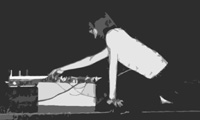
Jessica Rylan & Keith Fullerton Whitman: In a duo that had just come together live for the first time, these two had an impressively instantaneous rapport that was by far the highlight of the Festival. As they both stood in close range of each other on stage, a single table became an exploratory laboratory. Fullerton Whitman’s usually antsy, over-the-top squiggly, squirreling electronics and vibrant swoops and collisions became a dressed down foil to Rylan’s tart, abrasive and yet crisply resolute approach to exacting the grid of minimalism. They bent and jerked in unison, Rylan’s homemade box of sound and Whitman’s tasty samplers, all astutely dialoguing fiercely. It became a blend of what you come to appreciate about traveling to see a 1st time festival succeed based on its roots in effect as these two are both from the Boston area, and had only come together for the first time in accordance with the event. Rylan, a recent Bard grad has shown her sound installation work at MIT’s List Visual Arts Center, a sometimes incubator for futuristic sonic art (under the watchful guise of curator Bill Arning) kept the contemporary, conceptual spice of much traveled (playing over 100 shows last year alone) Fullerton Whitman whose understated humorist approach veers on the edge of eclectic anti-rock finding a magnetic field from which to gather their belongings and just play honestly, as a cohesive, impromptu unit. After an hour or so, their loops, samples, mixing, feedback and other field recordings didn’t lose an ounce of luster and I could have sat for a good while longer, and so could have the rapt audience who acknowledged their plying with a hearty response.
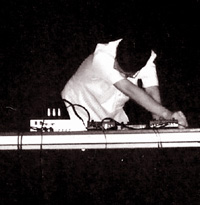
Brendan Murray & Seth Nehil: The afternoon continued with a second dynamic duo who were not about to be undone, OK, so this wasn’t a competition, but these guys, for a lack of another word in the moment, rocked! Seated, Murray, whose more methodical magician stance controlled his deck with the precision of a surgeon while Nehil, in a performance where he popped out of his usual calm, stoic shell worked mixers and multiple players and what looked to be handwritten note cards that he moved about as he played quite lithely. Their sound was compellingly engaging, almost confrontational. Found sound, regenerated, processed live, became, at points something veering on beat-driven. They almost popped. Maybe they did. After an hour long solid set they concluded with a dead-on finale, choreographed perfectly.
The evening performances were to include Dion Workman, Horse Sinister and others, though I was traveling and unable to make the final set, though it was certainly a great weekend of electronic, and otherwise experimental work from many of the more cerebral, hard-working artists from the Northeast. It will be great to see how this can grow after this first year’s seeds have dropped into the deep soil in Boston –major kudos to Stelzer for establishing a brand-new annual series that may spark the emergence of some interesting collaborations and offerings unlike others typically found in Boston for sure. They are lucky to have Intransitive resident in the hub of New England. Howie has already started talking enthusiastically about next year, so until then…
::..:::…..:..::….:::::..:::..:::::::……:::…::.:::….::::..:..:::…::…….::::
INTERVIEW w/ HOWARD STELZER (Intransitive Records)
TJ Norris: It’s been a while since we have connected but I know things are spinning on both sides of our land. What’s happening in Boston these days? What’s the scene like for improvised and electronic music?
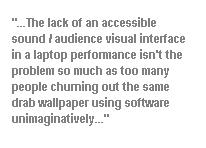
Howard Stelzer / Intransitive: It’s terrific, no joke. I hear so much good music here, it’s tough to keep up with it all. Just in the past few weeks, a guy called Jay Sullivan played an awesome set using prepared records and an old Califone turntable that I loved, and a new noise duo called Special Tigers were really great. My girlfriend, Donna Parker, just started a Tuesday night residency at a local club, so she’s doing noise shows there every week for the summer, then there’s going to be a Jeph Jerman/Tim Barnes/Sean Meehan/Dave Daniels show in my backyard as an afternoon BBQ concert in late July… yeah, there’s plenty to be excited about here in Boston! Life is good, I’m a happy guy.
TJN: When I visited in May, there certainly seemed to be a genuine camaraderie among the art scene. I am curious about when you put the label all together and what are some of the shiniest highlights?
HS: I started the label in 1997, when I was living in Gainesville, Florida and attending college. I’ve been a fan of electro-acoustic and noise music since high school, and had been working on music of my own. The label was initially an outlet for an album that I completed, called Stone Blind. Since it was so easy to publish one CD, I felt empowered (and bold!) enough to ask two of my favorite artists, Brume (Christian Renou, from France) and Kapotte Muziek (Frans de Waard, from the Netherlands) to submit an album for me to put out. The guy who offered to design the sleeves was a guy who I’d been corresponding with over email, Richard Chartier from Virginia. We’d been trading records, if I remember correctly. So Richard tells me on the phone one night about his own music, and that he’d finished recording an album, so why not put it out on my label –all of a sudden, Intransitive had four CDs on it! It took me by surprise, really. I also did a tape by tac in a very small edition, and a 7″ by a local Gainesville noise freak who I was friends with, so there you have catalog numbers one through five. Selling these, and trading with other artists and using them to start dialogues with like-minded folks was just so much fun, that I kept on doing it. Y’see, I’m almost 30 now –too young to have been part of the cassette-trading scene. But I do love what I perceive to have been the spirit of the tape-trading community: publishing un-commercial music for the hell of it, encouraging dialogue and collaboration, doing projects through a worldwide network of folks who are all just into the music, not trying to get rich or famous off of it, or doing it for fashion. All for love.
As for high points –man, they’re all high points! But I remember starting to hear people’s reactions to Jason Lescalleet’s work, after I published his first CD with nmperign –man, that was cool. I was so proud that total strangers were enjoying my friend’s work. Yeah, terrific. Lescalleet was the first guy I met after moving to Boston, he really introduced me to the people who were making the music around here.
TJN: Sounds like it came together sort of organically with the impetus to share the sounds with like-minded folks that may have initially been invisible but who have popped out of the international woodwork over these last seven or so years.
HS: Yeah, pretty much.
TJN: It’s possible that my first exposure to Chartier’s work came from the release you did, though he was already out there making visual projects and other work that I became familiar with soon thereafter. Does he still work with you on the graphics for the label? Just saw him at Mutek where he played with Ivan Pavlov (COH) as Chessmachine.
HS: Richard does some terrific work! I’m happy to hear that Chessmachine was goo –I haven’t heard that band yet, myself; To answer your question, no Richard does not do Intransitive’s graphic design anymore. That position is now held by Mike Shiflet, who also runs the Gameboy label in Columbus, Ohio.
TJN: Now, I know you have used the tape/cassette deck as a primary tool in the creation of your own sound work. Can you tell me how you think the culture of using analogue devices in our digital revolution stands the test of either live performance or practicality these days?
HS: For live performance, I’ve seen analog machines used in crappy performances, and laptops used in great ones. It depends entirely on the depth of the ideas of the person making the music. Of course, if someone is falling asleep behind their laptop while flat, dull sounds come out, then it could be bad music and a boring show. But the same can be true of, say, someone playing an acoustic instrument. The lack of an accessible sound/audience visual interface in a laptop performance isn’t the problem so much as too many people churning out the same drab wallpaper using software unimaginatively.
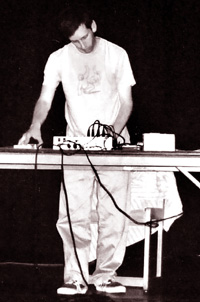
But practicality is totally subjective. A laptop might weigh less, or take up less space on a table than my rig of cassette decks, tapes, wires –but I need physical buttons to push in order for my music to come out sounding natural (to my ears, at least). I need analog mistakes and hiss and all those awful artifacts to keep me on my toes. When a machine starts to break, it gets very interesting for me. It would be impractical to try to emulate what I do as a Max patch, or to load up rewind-noises into Abelton Live, because if it breaks, then all the computer would do is crash –not an interesting sound.
TJN: LOL!!!! Right on. When you hear critics and others say that digital music is “disposable” what is your general reaction or view (MP3s, downloadable art, etc)?
HS: I’ve not heard critics say that digital music is disposable, and it’s obvious that it isn’t. There’s plenty of great music that’s made digitally. I personally don’t like the Mille Plateaux, Raster-Noton, faceless pretentious post-techno stuff which was so uncritically praised as more and more soundalike artists and labels started popping up in the late 90s/early 00s. The aesthetic of clean, white, personless and emotionless digital dance music is really not for me. But then there’s stuff like Pita, Taylor Deupree, Kevin Drumm, Taku Unami, Roel Meelkop, Richard Francis –lots of artists using digital means and coming up with worthwhile music. Good music is good music, no matter how it’s made.
TJN: Well I was really more referring to the emergence of music on I-pods and other devices, the rise and fall of Kaazaa and the provincially narrow-mindedness of the delete button.
HS: Oh, okay. I don’t have an opinion about that, since I don’t know anyone who uses file sharing as a major way to access music. I just hope that people who download Intransitive albums still want to go out and buy them. I don’t have much money, and end up spending plenty to get these CDs produced (forsaking things like bills and rent). But then I do small editions, which might be tough to find –eh, but no, if you want to find Intransitive stuff, you can do that easily enough. I have a web presence and distributors worldwide, and $12 is really a fair price for a CD. At least I think it is.
I happen to dislike mp3s, for a few reasons. I like packaging and the object-ness of records. I also don’t like to sit at my computer much. It gives me a headache after not too long. Digging through bins at record shops, though, is one of my very favorite things to do. –in fact, I just did this US tour with Jazzkammer, and we ended up stopping in record shops in nearly every city! We took home almost no money in the end, but I sure got some great records! Digging through some server looking for mp3s might be convenient, but it isn’t very exciting.
TJN: (puts on devil costume) Mille-Plateaux, Raster-Noton –oh man, wow, I winced when you said that. Those are two of my absolute favorite houses of finer digi-sounds – especially after having worked with Terre Thaemlitz and soon with Andreas Tilliander, not to mention the fact that the men from Raster-Noton blew my socks completely off at this year’s Mutek where they truly gave new meaning to sonic arts both audio-visually and to some extent, metaphysically. I am not about to get on a defensive soapbox, as your thoughts are grounded and I think all have the entitlements to their founded opinions but I do think the sound you speak of has developed and evolved beyond its development and would love to just be the devil’s advocate for a second to hear more of your side of the story.
HS: It just doesn’t move me, what can I say? I have one Komet CD, and it’s fine… but then I’d rather listen to King Tubby or real disco, something with actual soul. For dance music, I really like what Fela Kuti was doing in the 70s, or post-punk stuff. Dance music stripped of passion is not a statement I need to have made to me more than every once in awhile. I met Carsten Nicolai once –he seemed like a fun guy. His music isn’t much fun for me, though.
TJN: I see where you’re at now and am totally agreement about spinning disco, etc. I guess I just feel that in some ways the soul of sound has risen and changed and developed into something beyond its origins, leaving its essence in question, and that is how I see many of these artists approaching the music. So, the double-edged sword may only cut in a single direction half of the time.
Maybe you can respond to the clash and/or fusion of using turntables as opposed to – or incorporating laptops on the larger scope of the music scene right now?
HS: Well, there are many current musical sub-cultures that use turntables, coming from wildly different compositional backgrounds and goals. Again, there’s some fantastic music made using laptops, and some crap made with analog playback devices. I wouldn’t call it a clash, though… a laptop is just another instrument. Or several, actually, since different programs can facilitate very different ways of making music.
TJN: You have worked with Brume, Kapotte Muziek, M. Behrens and Lionel Marchetti – all who have emerged on the scene of experimental electronics over the past decade. Though, you have taken some interesting risks with artists who have yet to make it on the map, including some local New England composers. How do you know a project is right for Intransitive, and how important is it for a label to keep in context of promoting both a regional and international scene?
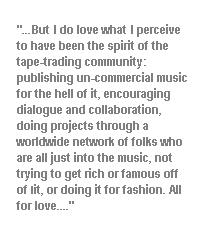
HS: I only publish the music that I find compelling, and that could change at any time. I’ve published different sorts of albums, but somehow, to me, it all seems to make sense together as a single entity. In other words, Marchetti and Seth Nehil come from totally different backgrounds with their music, but they don’t seem out of place on the same label. In a curatorial sense, I like placing disparate yet related ideas next to one another and creating new connections.
I don’t have a strict idea of what makes something an Intransitive album, but I do know that I don’t want to publish anything that’s merely a genre exercise. Y’know, “improv” as an idiom, or noise or ambient or anything that’s easily pegged like that. I may listen to that stuff, but for the label, I like music that’s somewhat confusing, that isn’t easy to pin down. A conceptual element in an album can intrigue me. I like the music that gives me something to chew on after the album ends.
I happen to love the music being made in New England, and particularly in Boston. I do feel something of a responsibility to the place where I live, since I connect with it so fully on a personal level. I feel Boston is a part of me… because I am lucky (or foolish!) enough to have a record label; I can be a cheerleader for Boston music, and can encourage the artists here who I feel are doing good work. Some of them, in turn, encourage me and offer good criticism, which is also very important. I support my community by publishing CDs, obviously, but also by presenting concerts, by introducing artists to each other, by distributing recordings through my mail-order catalog, by drawing attention to people’s work whenever possible, by talking to artists about their work –and so on.
TJN: How about the Intransitive Festival? I had a great time this year, getting my first live listen of John Hudak, Taylor Deupree, William Basinski and Jessica Rylan with Keith Fullerton Whitman (which was brilliant). Can you talk about its development and execution and if it has a future?
HS: I had a great time, too! What a blast that was. And I agree… Keith and Jessica made a great duo. I’d love to hear them do it again.
I am thinking about doing the festival annually, but only if I can get some sort of funding for it, and can get at least one other person to help me. This year, I just did it by the seat of my pants; so to speak –using only what money came through the door via ticket sales. That was very tough, and I had to deal with the bureaucracy of the university that I held the festival in. I’m still dealing with it, actually (any event involving a university becomes a huge pain in the ass). Anyway, the Intransitive Festival is something that I had wanted to do for a long time, and I used my graduate studies as an excuse to finally do it; it was my MFA thesis project! So I got to use the auditorium for free (though I had to pay security guards –a union agreement that they have with the school), and got to use the faculty as resource when I had questions about planning.
The idea was to present three nights of music by artists working in this part of the world, the American northeast, to both celebrate this aspect of our cultural environment and to draw general attention to the variety of sonic art around here. I invited folks who lived in the northeast, but who were from another part of the country (Seth Nehil) or the world (Dion Workman), folks who lived in Boston (Mike Bullock & Vic Rawlings, Donna Parker), folks who were affiliated with Intransitive (Jason Lescalleet, John Hudak) and folks who weren’t (Taylor Deupree, Dion Workman, Keith Whitman), a mix of various styles and approaches. I wanted to attract both fans and people who don’t typically attend experimental music concerts. To spread the word, you know. Doing the concert at the university made it safe for people who would never venture out to the “uncool” gallery, or the warehouse in the rough part of town, or the shitty dive bar, which is where this stuff tends to happen. Not by the artists’ choosing, of course, but because there just isn’t a structure to present electro-acoustic music like there is for jazz or contemporary classical music or multi-media art, even. So at a university, anyone could come and not worry about being alienated or uncomfortable, and hear the music in a good environment.
TJN: Well, there are a few interesting venues and festivals that are popping up, slowly in the US and more largely in Europe, that support sound that doesn’t necessarily have a space. In fact I think with the evolution of arts as a whole we are going to see an emergence, a need, for more experiential arts that incorporate multimedia more fluidly, thus requiring funding and venues and technical staff, etc. Do you have a take on that?
HS: In Europe, there are plenty of festivals for electro-acoustic music, or festivals that incorporate it –in the States, though, not so many. I can think of just a few off the top of my head. But I doubt that the US will see sonic art (or any new art!) as being necessary to fund. With my festival, I’ll have to fight for what little money there is, and maybe I’ll get it, but I don’t expect that it will be as much as European festivals can get. In fact, the Massachusetts Cultural Council, which is one of the two possible places I’ll look to for funding, has cut its available funds by something like 70% this year due to cuts in general state funding (as well as cuts in social services, public education, lots of other things that government is supposed to be able to provide for citizens). There are hardly any arts funding here, since the US has more important priorities for its income: namely, corporate welfare and war. Though with US debt projected at five trillion dollars over the next decade, thank you George W Bush (who entered office with five billion dollars surplus, we can’t forget), we don’t actually have any income –just fluctuating debt. I don’t think that any new arts funding will appear for a long, long time.
At any rate, art created in financial struggle is potentially stronger than state-supported art. Think about jazz, which in 2004 has an academic network of funding in many countries –and jazz as an art form has pretty much died. It’s not a vital music anymore. It’s a history lesson, with people imitating styles that were innovative forty years ago. It might be fine to listen to, but no kind of jazz is on the edge of anything except nostalgia. So, without a financial safety net, a musician’s motivations might become more pure. If someone is making the sound they believe in, without having to periodically defend it to a panel of bureaucrats so that his or her funding is renewed, and without hope of generating income from it, then they will make different decisions about their sounds. It’s harder to live this way of you’re a musician, but it might ultimately be good for the music.
TJN: Actually, I find the latest breed of jazz coming from the Boston area to be quite righteously alive and thriving. You’ve got Dead Cat Bounce, Timo Shanko, Club d’Elf, Django Carranza, Charlie Kohlhase. These guys breathe the fire of life into what they do, have all been “classically” trained and have all managed to establish a fully revised take on what jazz means in our new millennium. What Vic Rawlings and Mike Bulloch do could easily be considered a new take on jazz – as an improvised medium is there ever really a boundary?
What was the biggest stand out surprise for you at the festival?
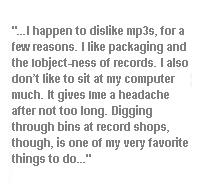
HS: Everyone played exceedingly well. Every artist was in top form. Brendan Murray’s set was the best he’s ever done; same with Jessica Rylan. John Hudak & Jason Lescalleet’s duo set blew me away, really floored me. Everyone was just so “on”, I couldn’t have been happier. That’s not much of a surprise, though. The biggest surprise was the number of people I’d never met before, who introduced themselves to me during the festival and wanted to talk about the music. Some had no idea how much music happened in Boston, but they heard of this festival somehow and decided to check it out. I met a lot of people, got some good reactions from listeners. That was terrific.
TJN: Is there a certain commercialism connoted in the very term “electronica” or is it just a catch-all for a movement indicative to the last decade or so? Given that music is music is music – I realize the difference in the struggle and access for some as opposed to others depending on the contract and record deal. I mean, Mute and Warp produce a wide spectrum of good music – but for all the Speedy Js and Aphex Twins with bigger budgets to tour with print packages, nifty posters and all – how does that fare for those who really struggle to get a worthy recording produced to reach some sort of audience? In other words…can you talk about the business of the business of an indie label producing music that reaches a fringe, and probably very devoted population?
HS: I can’t respond to the first part of your question, as electronica is totally not my thing; I don’t listen to it, and have no opinion about it. But the business of the business… that’s tricky. I promote each album individually, and also the label as a whole. My hope is that my own enthusiasm about this stuff comes through, and perhaps someone who liked one CD will take a chance on the next one. There aren’t very many outlets for this sort of music, ultimately, and the number seems to grow continually smaller. Anomalous closed, other distributors are doing less and less business… it’s really tough to get these CDs to sell. I just have to keep publishing what I like, be satisfied simply by the act of publishing a new CD. The music will find listeners eventually.
TJN: Do you find that the merge of different media produces a larger understanding of the sound or intended experience? One of the best multimedia troupes I have ever seen live was Dumb Type, with its pin-drop precision fusing choreography, video, acting, visual art and sound (ala Ryoji Ikeda). Can you respond to the current clash of sound/art cultures?
HS: Sonic art as it has existed in the “art world” has been around since the 1950s (I’m thinking of Bernhard Leitner, Max Neuhaus, John Cage/Robert Rauschenberg). Theatrical elements have been incorporated into other art forms for just as long. But an audience for one medium might never be aware of work being done in multimedia, or the other way around… the art world tends to keep to itself, knowing about recorded or performed sound art only when it comes out from accepted artists within an institutional context. Likewise, people who buy Kapotte Muziek records, say, might never care about multi-media art that takes the form of theatrical presentation or interactive sculpture. I think that’s the case more often than someone coming to one and discovering the other. People tend to like things that are presented as safe in some way, and weird records have their own ghetto which you’re either intrigued by or not. I don’t think that this is an inherently bad thing, it’s just how it is.
TJN: OK, now I know that you, yourself are a sound composer. What are you working on these days, any collaborations?
HS: The project that I’m thinking about most, and am most satisfied with, is the BSC. That’s an eight-person group playing improvised electro-acoustic music, led by Bhob Rainey (who is also in nmperign). Though improvisation is our primary form of composition, we’ve also done pieces by Stockhausen and Christian Wolff… actually we performed “Edges” with Wolff a couple of nights ago, and will be recording it with him soon. That’s exciting. Other than that, I am playing solo a lot, and just did a two-week tour with Jazzkammer, which is the duo of Lasse Marhaug and John Hegre, from Norway. We did some trios, and I played about 11 solo sets during that tour. We’re going to start work on a collaborative trio album soon for a label in New York, and I’m going to try to record a new solo album of cassette music. I’ve recorded a duo album with Vic Rawlings, also of the BSC, who plays self-made electronics and a highly prepared cello –no idea yet who will put that one out. And I’m in a dumb power-noise duo with my friend Greg Kelley called the Great Danes. We’re talking about recording, not sure when that will happen.
I also have plans to do through-the-mail collaborative work with Alfredo Costa-Monteiro (from Barcelona, a terrific accordion player), Frans de Waard (the ongoing “Torn Tongue” project using a spoken voice as sound material, endlessly recycled since 1997), Andi Arroganti (a German electro-pop artist who made a bunch of cassettes in the early 80s, some of which are being reissued as LPs by Was Soll Das? Schalplatten… he’s going to turn my tapes into pop songs, I think), Richard Francis (aka Eso Steel, from New Zealand… our project is a recycling of drone-rock music he recorded with two friends of his, some of which is coming out as a lathe-cut 10″ on his CMR label) and Seht (aka Stephen Clover, also from New Zealand). There are other people I’d like to work with, but I tend to work very slowly so I’m going to get these done before embarking on any new projects.
Collaborations are terrific, and very exciting in how they open up my own ideas about music in unexpected ways. To create collaborative music, especially when it’s improvised, is the biggest thrill. When it goes really well, I’m amazed by what comes out, and can sometimes hear the result as if I’m outside of it and the music is making itself. Amazing, when it works. Maybe this sounds hokey, I don’t know. But when I listen back to, say, BSC recordings, I can forget that I’m in the sound somewhere… or when I send a tape overseas to someone and get it back completely altered, it changes my perspective of what I’m doing.
TJN: Do you want to talk about what it’s like to represent other musicians? Is it a peer process or is it more curatorial?
HS: I don’t think that I do represent artists. I represent individual albums, but then the artists are free to have their next album out on another label. I don’t have any exclusive artists on Intransitive, and I’m not really interested in that. Again, just my personal taste, I know other labels cultivate a roster or put most of their energy behind a small handful of artists. But it’s to the artist’s advantage to not be represented by one label; by spreading out work over a few labels, the artist benefits from the various personalities and promotional efforts that are working to get their music out into the world.
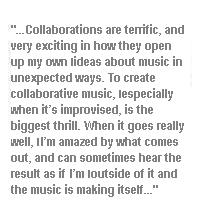
I suppose my decisions about the label are something of a peer process in that I’m always talking with my friends about what we’re listening to, or excited about, or what we’re all working on. I enjoy publishing work by people who I personally like, and I’m constantly meeting people through this music. But Intransitive is ultimately about my personal taste, and I decide what I think is worth publishing.
TJN: What’s next for you?
HS: Oh, the usual: more CDs. I’ll be publishing a new album by Roel Meelkop (hopefully with a small-edition 7″ to go with it), and a collaborative CD by Kapotte Muziek & Lethe (a Japanese artist named Kuwayama Kiyoharu –I’m a BIG fan!). After that, a 2CD by nmperign & Jason Lescalleet called Love Me Two Times, which is a follow-up to their earlier CD on Intransitive from a few years ago is will act as a sort of summation of their collaborative work up until now.
Beyond that, I have vague plans for albums by Brendan Murray and a CD by an as yet unnamed band consisting of Campbell Kneale (Birchville Cat Motel), Antony Milton (A.M., Paintings of Windows, the Nether Dawn, lots more pseudonyms –he’s brilliant!), Richard Francis (aka Eso Steel, who I LOVE), and James Kirk (of Sandoz Lab Technicians). I’m going to keep expanding the Intransitive Mail-order Shop, which I hope grows and grows. I’m also planning on making more records of my own music, hoping some other labels want to publish some of it. I’m also looking for a regular nine-to-five career-style job, to fund my record-publishing habit.
I’ll be playing in the High Zero Festival in Baltimore this September, so that will be fun. There’s info about it online somewhere. I’m also looking into new opportunities for presenting concerts here in Boston. I have some nice things in the pipeline, but nothing that I can talk about yet.
TJN: Well, you never seem to slow down and these new ideas, some tried and true (to my ears) will be quite welcome in your growing roster so I will be watching and waiting –you have the last 15 minutes, seconds or words.
HS: Y’know who’s awesome? Birchville Cat Motel, Brendan Murray, A.M. (Antony Milton), Roel Meelkop, Wolf Eyes, Lethe (Kuwayama Kiyoharu), Prurient, Culpis, Tesendalo, Dave Phillips, Sawako, das Synthetische Mischgewebe, Richard Francis (Eso Steel), the Cherry Point/LHD, Peter Wright, and the labels Last Visible Dog, Was Soll Das?, Rossbin, Kernkrach, and Celebrate Psi Phenomenon.
TJN: So, what you are saying is – you are, like me, a BIG fan of music (I am loving Sawako and Eso Steel) that is not yet ready for prime time (and probably never will be), or as the moniker ‘outta Boston goes with “No Commercial Potential”!? I’m sure we could talk for hours on the subject – haven’t we done that?
HS: I suppose we have!
You’re right, though: I may be a musician and a publisher, but more than anything I’m a fan. Absolutely.
Speaking of “No Commercial Potential” (for those of you not in Boston, that’s the long-running block of experimental music that WZBC, Boston College’s radio station, plays nearly every night), I forgot to mention that I’m also now doing a radio show on MIT’s station, WMBR! I feel like I’m in college again, it’s so much fun. I’m on Friday nights from midnight until 1am, webcast at
“http://wmbr.mit.edu”>http://wmbr.mit.edu My show is 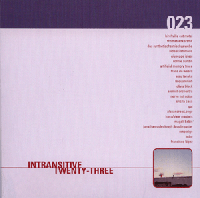 called “Rainbow Electronics” –very clever Merzbow reference, eh? I’m such a nerd.
called “Rainbow Electronics” –very clever Merzbow reference, eh? I’m such a nerd.
Now available!: int023 Intransitive Twenty-Three 2CD compilation featuring music by Francisco Lopez, Eric la Casa, Lethe, Jonathan Coleclough & Colin Potter, Magali Babin, Gal, Nerve Net Noise, Animist Orchestra, nmperign, Thomas Ankersmit, Birchville Cat Motel, Haco, Frans de Waard and many more!
::..:::…..:..::….:::::..:::..:::::::……:::…::.:::….::::..:..:::…::…….::::






